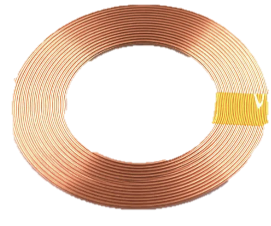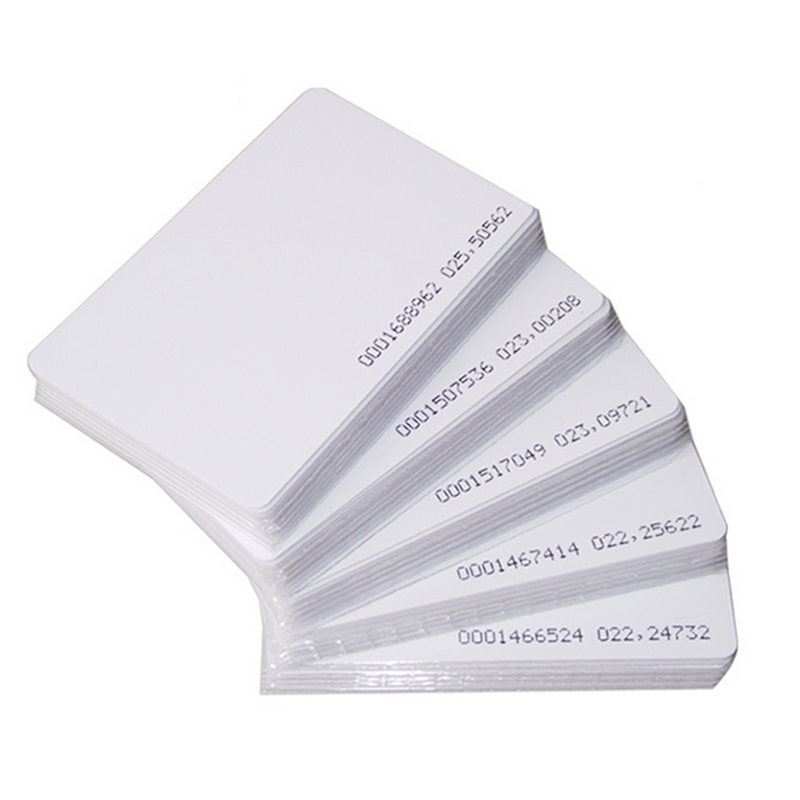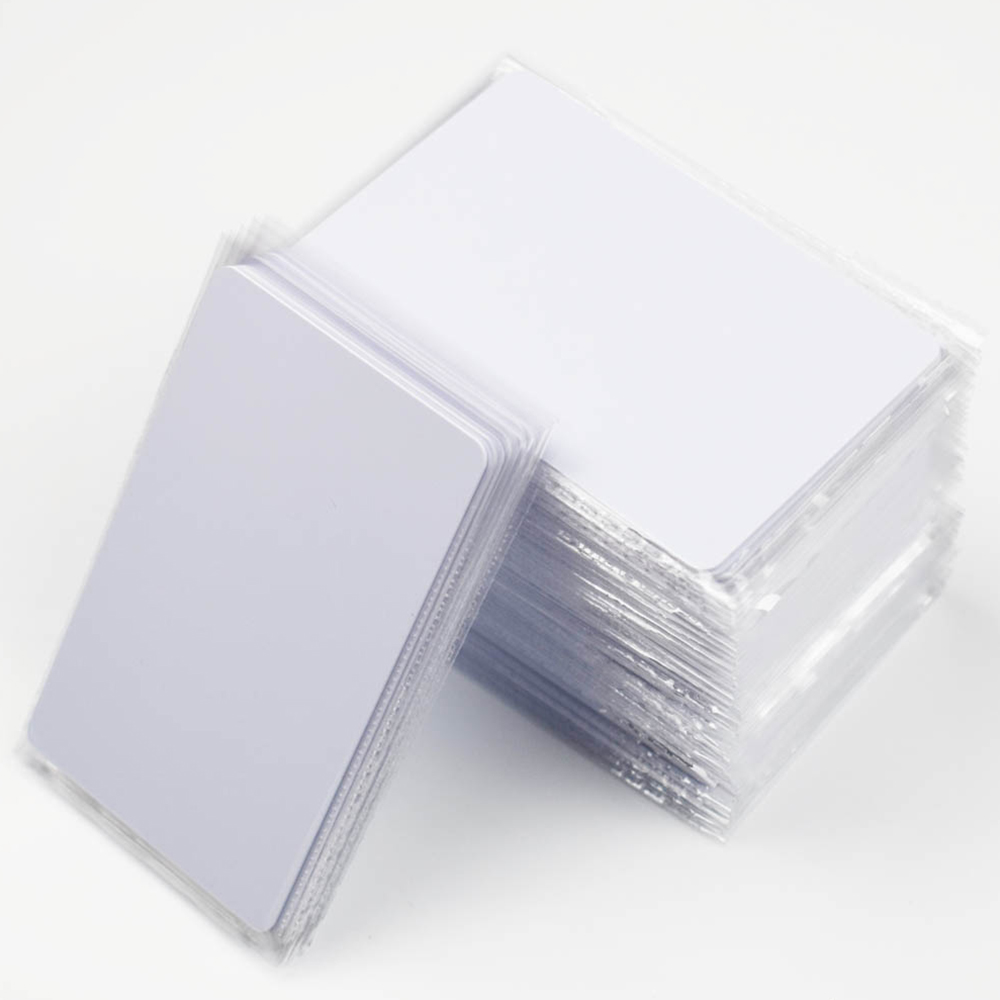The Ultimate Guide to Choosing the Right RFID Labels for Asset Tracking
The Ultimate Guide to Choosing the Right RFID Labels for Asset Tracking
In today’s technology data driven quick step world that demands multi-dimensional accuracy, tracking assets efficiently is critical for businesses to improve productivity, cut cost of operations and avoid losses through various factors within a business process chart. Assets as the term says, is a businesss cash in physical form. On Wall street companies and managements are made and laid based on metrics such as ROA (Return on Assets). Therefore, its essential that you are in good hands when dealing with an intricate application of a relatively simple (sense our sarcasm?) technology. One of the most effective methods of asset tracking is using RFID labels (Radio Frequency Identification). RFID labels come in different forms, including LF (Low Frequency), HF (High Frequency), and UHF (Ultra High Frequency). Each type of RFID label offers distinct advantages and is designed for specific use cases depending on the industry, environment, and asset type.
In this guide, we will explore how to choose the right RFID labels for asset tracking by analyzing use cases, environmental factors, and performance characteristics across various frequencies.
What Are RFID Labels and Why Are They Essential for Asset Tracking?
RFID labels are small tags that use radio waves to communicate with a reader and transfer data wirelessly. These labels can be attached to various assets, allowing them to be tracked and monitored in real-time. RFID technology surpasses traditional barcode systems by offering greater read range, durability, and the ability to read multiple tags simultaneously without line-of-sight requirements.
Why RFID over traditional methods?
- RFID labels can store much more information than barcodes, including asset ID, maintenance history, and location data.
- They can be read in challenging conditions where barcodes may not work, such as in warehouses, factories, or outdoor environments.
- RFID labels support automation, reducing manual errors and labor costs.
What are the Types of RFID Labels: LF, HF, and UHF
1. What are LF (Low Frequency) RFID Labels
In brief, any RFID Tag or label or transponder that operates between 100 to 150 KHz is considered a LF or Low Frequency RFID transponder. Low frequency unlike HF and UHF is resilient in high metal and water environments and therefore the choice of frequency when it comes to such environments such as construction, machines and livestock / Animal ID.
Here are some more details that may help you understand the nuances, true and complete understanding of the technology is out of the scope of this article and typically requires advanced degrees in electronics, computers and engineering. This article only provides a surface level guide for a purchaser, to get expert advice contact our subject mater expert team to not only guide you, but also supply you the right product by understanding the interplay of the true requirements of your business at scale.
- Frequency range: 30 kHz to 300 kHz (commonly 125 kHz and 134 kHz)
- Read range: Typically up to 10 cm to 1.5 meters depending on the technology. e.g. a cattle inlay using ISO11784/11785 using half duplex would read about 1 meter with a panel reader, but same tag reads about 10 cms with a hand held reader. The distance is directly proportional to the power and the magnetic flux the reader (also known as the interrogator), antenna design, and environmental factors. on the Surface one may just look at one number or another, but the actual dependencies and engineering interplay between various variables have a significant role to play. On the shorter read distance side of the spectrum a 125khz iso card may only read 5 or 10 cms pending on the same variables and various communication algorithms applied at the Integrated Circuit level. As far as the
- Best suited for: Short-range applications, such as access control, animal tracking, and industrial automation.
LF RFID labels are known for their ability to work well in environments with metal and liquid interference. They are the go-to solution when the read range is less critical, but the environment is challenging. This makes them ideal for asset tracking in industries like livestock management, automotive, and warehousing where assets are often near metals or liquids.
Use Cases:
- Livestock tracking: LF tags are commonly embedded in ear tags for animals, as they can be read even when attached to moving or submerged objects.
- Access control: LF tags are used in employee ID cards and building access systems where short-range identification is sufficient.
Environmental Considerations:
- Water and metal interference: LF RFID labels perform better in the presence of water or metal compared to UHF or HF tags.
- Temperature and durability: LF tags are durable and can withstand extreme temperatures and harsh industrial environments.
2. HF (High Frequency) RFID Labels
- Frequency range: 3 MHz to 30 MHz (most commonly 13.56 MHz)
- Read range: Typically 10 cm to 1 meter
- Best suited for: Library systems, retail inventory, transportation, and ticketing applications.
HF RFID labels are widely used due to their higher memory capacity and moderate read range. These tags are more affordable than LF tags and are commonly found in industries like retail, logistics, and asset management.
Use Cases:
- Library and retail asset tracking: HF tags are often used for tracking books, clothing, and retail items. Libraries use HF RFID systems for cataloging books and enabling fast check-ins and check-outs.
- Inventory management: Retailers and warehouses use HF tags for managing stock and tracking high-value assets.
Environmental Considerations:
- Interference with metal: HF tags can struggle near metal surfaces or liquids but perform well when attached to non-metallic objects.
- Temperature tolerance: HF tags are designed to work in various conditions, but extreme temperatures may degrade performance over time.
3. UHF (Ultra High Frequency) RFID Labels
- Frequency range: 300 MHz to 3 GHz (commonly 860 MHz to 960 MHz)
- Read range: Typically up to 12 meters or more
- Best suited for: Supply chain, logistics, vehicle tracking, and large asset management.
UHF RFID labels offer the longest read range and are the most popular choice for tracking items across logistics and supply chains. They are ideal for asset tracking in industries that need to monitor large volumes of items or assets over a wide area.
Use Cases:
- Warehouse management: UHF RFID tags are used in inventory tracking systems to automatically track pallets and containers, significantly speeding up the process.
- Logistics and supply chain: UHF tags help track shipments, containers, and goods throughout the supply chain, providing real-time data on location and status.
- Retail: UHF tags are widely adopted in clothing stores and large warehouses to streamline stock tracking, minimize theft, and optimize inventory management.
Environmental Considerations:
- Metal interference: UHF tags are more susceptible to interference from metal surfaces and liquids than LF or HF tags. To address this, manufacturers offer specialized on-metal UHF RFID labels designed to reduce interference.
- Harsh conditions: UHF tags are available in ruggedized forms for use in extreme industrial environments, but care must be taken to select tags with appropriate protection against dust, moisture, and temperature variations.
How to Choose the Right RFID Label for Your Application
1. Environmental Conditions
- Metal and liquid interference: If your assets are frequently near metal or liquids, LF or HF RFID tags are the best options. UHF tags generally do not perform well near these materials unless specially designed.
- Extreme temperatures: Ensure that your RFID labels can withstand the temperature ranges in which they will be used. This is especially important in industries like manufacturing, transportation, and cold storage.
2. Read Range
- Short-range tracking: For applications that require reading tags within a few centimeters or inches (e.g., access control or livestock tracking), LF RFID tags are ideal.
- Medium-range tracking: For applications that need a read range of up to 1 meter (e.g., retail inventory tracking or ticketing systems), HF RFID tags offer a cost-effective solution.
- Long-range tracking: If you need to track items over long distances, such as in warehouses, factories, or logistics operations, UHF RFID tags provide the best performance.
3. Industry-Specific Applications
- Retail: Retailers often choose HF or UHF tags for inventory management, theft prevention, and stock optimization.
- Logistics: UHF RFID labels dominate the logistics and supply chain sectors because of their ability to track items over long distances and provide real-time updates.
- Industrial/Manufacturing: For industrial asset tracking, consider ruggedized LF or UHF RFID labels to withstand harsh environments, metal interference, and temperature fluctuations.
4. Cost
- LF RFID tags tend to be more expensive but are essential for certain applications where durability and resistance to interference are key.
- HF RFID tags are typically cheaper and work well in environments with minimal interference.
- UHF RFID tags offer the best value for applications requiring long read ranges but may require investment in specialized on-metal tags to handle interference.
RFID Labels in Challenging Environments: Metal, Water, and Electronic Interference
One of the most critical factors in choosing the right RFID label for asset tracking is understanding how environmental conditions such as metal, water, and interference from other electronics can affect tag performance.
Metal Interference:
- LF RFID: Performs well in environments with metal.
- HF RFID: Somewhat sensitive to metal but can be managed by placing tags away from metallic surfaces.
- UHF RFID: Highly sensitive to metal, though on-metal UHF tags are designed to mitigate this issue.
Water Interference:
- LF RFID: Resistant to water and can be submerged without performance degradation.
- HF RFID: Performs reasonably well around water but with some reduced effectiveness.
- UHF RFID: Water absorbs UHF signals, so UHF tags may not work well in wet conditions unless specifically designed for water resistance.
Interference from Other Electronics:
- RFID systems can experience interference from nearby electronic devices operating on similar frequencies. To reduce interference, select RFID systems with anti-collision protocols or use shielded environments where necessary.
Conclusion: Making the Right Choice for Your Asset Tracking Needs
Choosing the right RFID labels for asset tracking depends on your industry, the environment, and the specific performance requirements. By understanding the differences between LF, HF, and UHF RFID labels, you can select the best tag for your needs, ensuring reliable, efficient, and long-term asset tracking.
For most businesses, UHF RFID tags offer the best combination of range, cost, and flexibility, making them ideal for large-scale operations like logistics, retail, and warehouse management. However, if your assets are exposed to challenging environments involving metal or water, LF or HF RFID tags may provide the better solution.
Ensure that you consider factors such as read range, environmental conditions, and industry-specific requirements when making your decision. By doing so, you’ll be able to optimize your asset tracking



